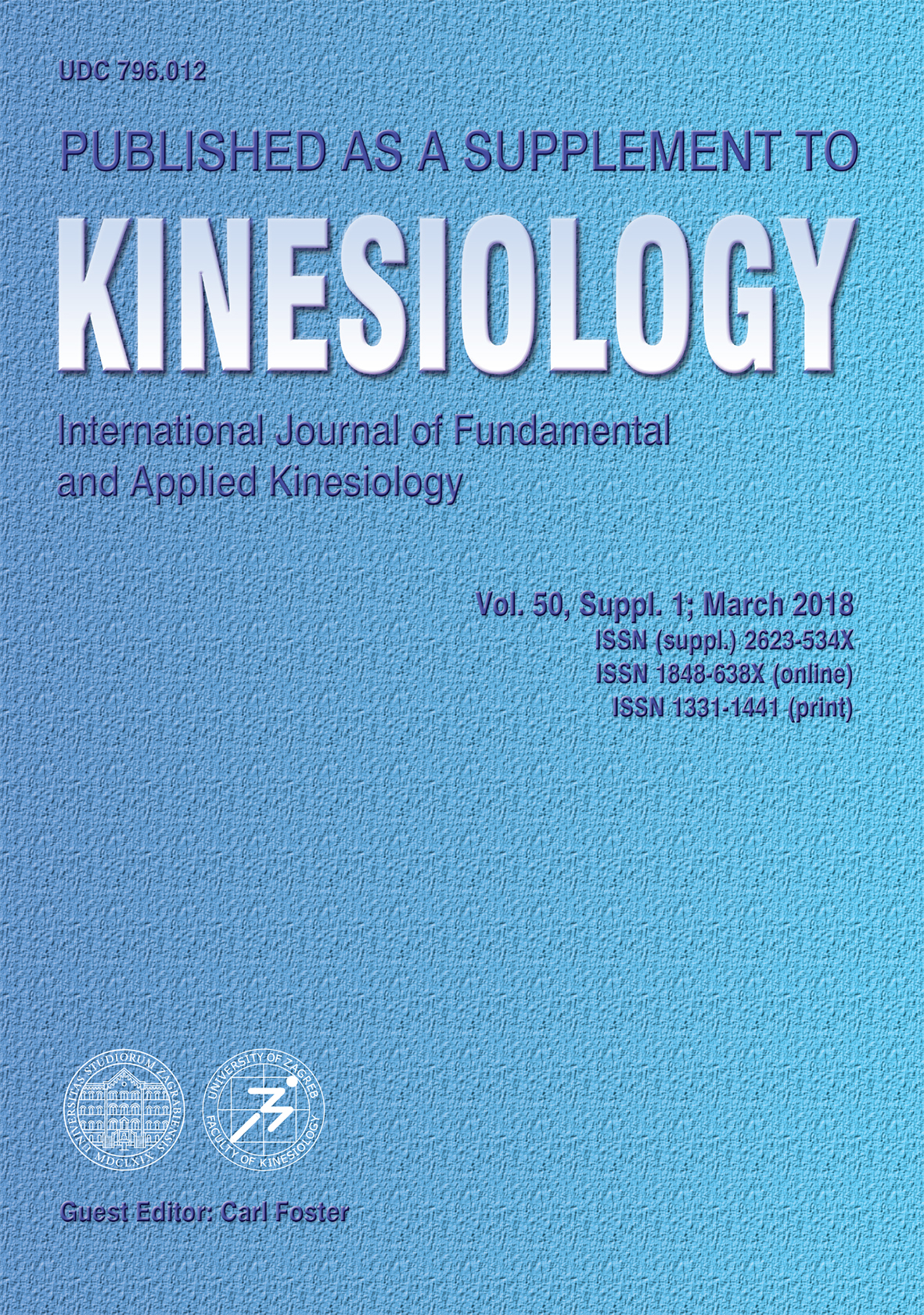EXERCISE PRESCRIPTION WHEN THERE IS NO EXERCISE TEST: THE TALK TEST
Abstract
The Talk Test is a subjective measure of exercise intensity which, like RPE, has come to be accepted as an alternative to objective measures (%HRR, %VO2max) for exercise evaluation and prescription. This paper reviews the history and indications for using the Talk Test as a tool for both exercise evaluation and exercise prescription. The Talk Test, in one form or the other, has a long history, dating from at least 1937. It appears to be robust relative to the method of provoking speech and to the exercise mode. In the most widely used version, the subject recites a standard paragraph of 30-100 words, and responds to the question ‘Can you speak comfortably?’ With answers of ‘Yes’ (POSITIVE), ‘Yes, but…’ (EQUIVOCAL), and ‘No” (NEGATIVE), the Talk Test appears to be able to identify exercise intensities closely associated with the ventilatory (VT) and respiratory compensation (RCT) thresholds, and to bracket subjects into %HRR intensities closely associated with the accepted exercise/training intensity guidelines, without the need for performing a maximal exercise test. The Talk Test appears to work well in a range of populations from college students, healthy adults, elite athletes to patients with chronic diseases. It also seems to be a valid and reliable marker of the presence of exertional ischemia. In a variety of populations, the Talk Test appears capable of being translated into absolute exercise training intensities, on the basis of a commonsense step down sequence. The Talk Test appears to work by allowing detection of when the suppression of breathing frequency, which is necessary for speech, begins to lead to CO2 trapping, which interferes with breathing comfort. Its response to disrupting stimuli such as stochastic exercise, exercise training and blood donation follow predictable patterns. Guiding exercise intensity using the Talk Test instead of %HRR provides comparable responses during exercise training, without the need for an anchoring maximal exercise test. In summary, the Talk Test seems to offer a considerable promise as a means of exercise evaluation and prescription, in a wide variety of exercising individuals, without the need for a preliminary exercise test.
Key words: exercise prescription, breathing, ventilatory threshold
Downloads
How to Cite
Issue
Section
License
Copyright (c) 2018 Kinesiology

This work is licensed under a Creative Commons Attribution-NonCommercial 4.0 International License.
At Faculty of Kinesiology we recognize that access to quality research is vital to the scientific community and beyond. Kinesiology is non-profit journal and all costs of publishing and peer review process are covered by the publisher itself or other funding sources like Ministry of Science and Education of the Republic of Croatia. Full text papers are also available free of charge at http://hrcak.srce.hr/kineziologija. There are no restrictions on self archiving of any form of paper (preprint, postprint and publisher's version).
Articles are distributed under the terms of the CC BY - NC 4.0
Kinesiology does not charge any fees to authors to submit or publish articles in our journal.


